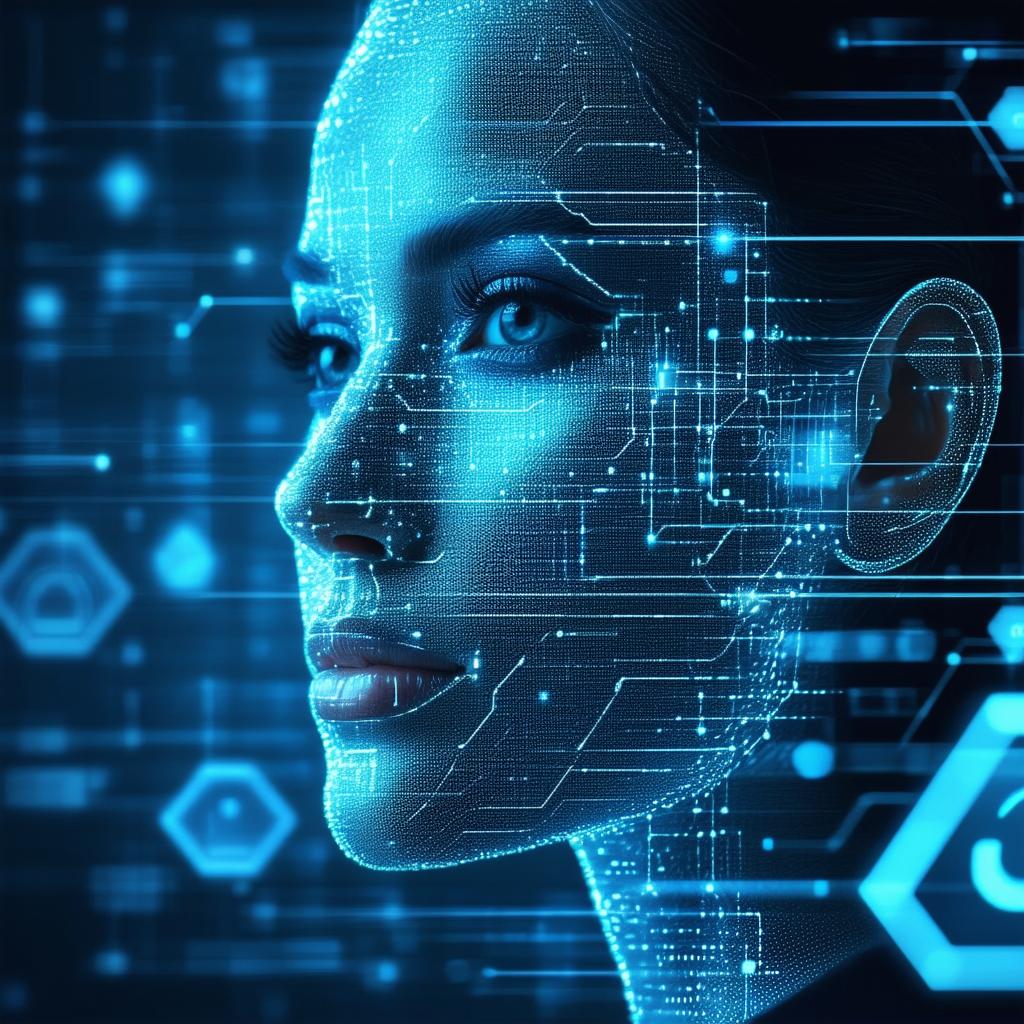Introduction
Biometric authentication is an advanced security method that uses unique biological traits to verify an individual’s identity. Among various biometric techniques, face recognition has gained immense popularity due to its ease of use and high accuracy. With advancements in artificial intelligence (AI) and machine learning (ML), biometric authentication has become a crucial part of cybersecurity, access control, and digital identity verification.
This article explores biometric authentication, its working mechanisms, different types, applications, advantages, challenges, and the future of biometric security.
What is Biometric Authentication?
Biometric authentication is a security process that uses biological data, such as fingerprints, facial features, iris patterns, voice, and even behavioral traits, to verify an individual’s identity. Unlike traditional authentication methods like passwords or PINs, biometric authentication relies on unique, hard-to-replicate characteristics, making it a more secure and convenient alternative.
Types of Biometric Authentication
- Fingerprint Recognition – Scans the unique ridge patterns on a person’s finger.
- Facial Recognition – Uses facial features and structures to verify identity.
- Iris Recognition – Analyzes the unique patterns in a person’s iris.
- Voice Recognition – Identifies users based on voice patterns and tone.
- Retina Scanning – Examines the blood vessel patterns in the retina.
- Palm Vein Recognition – Uses infrared light to scan vein patterns in the palm.
- Behavioral Biometrics – Includes keystroke dynamics, walking gait, and other behavioral characteristics.
How Does Biometric Authentication Work?
Biometric authentication follows a structured process to verify identity securely:
1. Data Collection
- A biometric scanner or sensor collects the biometric data (e.g., a fingerprint scanner captures fingerprints, a camera captures facial features).
2. Data Processing & Feature Extraction
- The captured data is analyzed, and key distinguishing features are extracted using AI and ML algorithms.
3. Data Conversion & Template Creation
- The extracted features are converted into a digital biometric template, which is stored securely in a database or on a device.
4. Comparison & Matching
- When authentication is requested, the system captures new biometric data and compares it with the stored template.
5. Authentication Decision
- If the data matches, access is granted; if not, authentication fails, and access is denied.
What is Face Recognition?
Face recognition is a subset of biometric authentication that uses AI-driven algorithms to analyze facial features and verify an individual’s identity. This technology is widely used in smartphones, surveillance systems, access control, and online identity verification.
How Face Recognition Works
- Face Detection – The system detects a face in an image or video.
- Feature Extraction – The algorithm maps facial landmarks (e.g., nose, eyes, mouth, jawline) and measures unique facial characteristics.
- Template Creation & Storage – The extracted data is converted into a mathematical template and securely stored.
- Face Matching – The system compares the captured image with stored templates to verify identity.
- Authentication Decision – If a match is found, authentication is approved; otherwise, access is denied.
Applications of Biometric Authentication & Face Recognition
Biometric authentication, including face recognition, is used in various industries for enhanced security and seamless access control:
1. Mobile & Digital Security
- Smartphones & Laptops – Biometric authentication is used in fingerprint scanners and facial recognition for unlocking devices.
- Online Banking & Payments – Banks use biometric authentication for secure transactions and fraud prevention.
2. Government & Law Enforcement
- National ID Programs – Governments use biometrics for digital identity verification.
- Border Security & Immigration – Airports use face recognition for seamless passport verification.
- Criminal Identification – Law enforcement agencies use biometric databases to track criminals.
3. Workplace & Enterprise Security
- Access Control – Organizations use biometric scanners for restricted area access.
- Attendance & Workforce Management – Employees log attendance using biometric authentication.
4. Healthcare & Medical Sector
- Patient Identification – Prevents identity fraud and ensures accurate medical records.
- Prescription Access – Ensures that only authorized individuals access prescriptions.
5. Smart Homes & IoT Devices
- Home Security Systems – Face recognition is used in smart locks and surveillance cameras.
- Personalized AI Assistants – Devices recognize users and offer personalized experiences.
Advantages of Biometric Authentication & Face Recognition
- Enhanced Security – Unique biological traits make it difficult for attackers to replicate.
- Convenience & Speed – Users don’t need to remember passwords; authentication is quick.
- Fraud Prevention – Reduces identity theft and unauthorized access.
- Non-Transferable – Unlike passwords, biometric data is unique to individuals.
- Integration with AI & ML – Constant improvements in accuracy and detection.
Challenges & Concerns
Despite its advantages, biometric authentication and face recognition pose certain challenges:
- Privacy & Data Security – Storing biometric data raises concerns about hacking and misuse.
- False Positives & Negatives – Imperfect algorithms may cause authentication errors.
- Spoofing & Deepfakes – Attackers may use fake fingerprints, face masks, or AI-generated images.
- Regulatory Compliance – Governments impose strict data protection laws on biometric systems.
- Ethical Concerns – Face recognition used for surveillance raises civil liberties concerns.

Future of Biometric Authentication & Face Recognition
The future of biometric authentication will be driven by AI advancements, improved security measures, and regulatory frameworks. Key trends include:
- Multi-Modal Biometrics – Combining multiple biometric factors (e.g., face + fingerprint) for higher security.
- Blockchain-Based Biometric Security – Decentralized storage of biometric data for enhanced privacy.
- Edge AI Processing – Processing biometric data locally on devices to improve speed and security.
- AI-Powered Liveness Detection – Preventing spoofing attempts using real-time facial movement analysis.
- Wearable Biometric Authentication – Smartwatches and wearable devices integrating biometric security.
Conclusion
Biometric authentication and face recognition have transformed security and identity verification across industries. Their convenience, speed, and security benefits make them an ideal replacement for traditional authentication methods. However, privacy concerns, potential misuse, and regulatory challenges must be addressed to ensure safe and ethical implementation.
With continuous advancements in AI, machine learning, and cryptographic security, biometric authentication is set to become even more robust, paving the way for a safer digital future.




